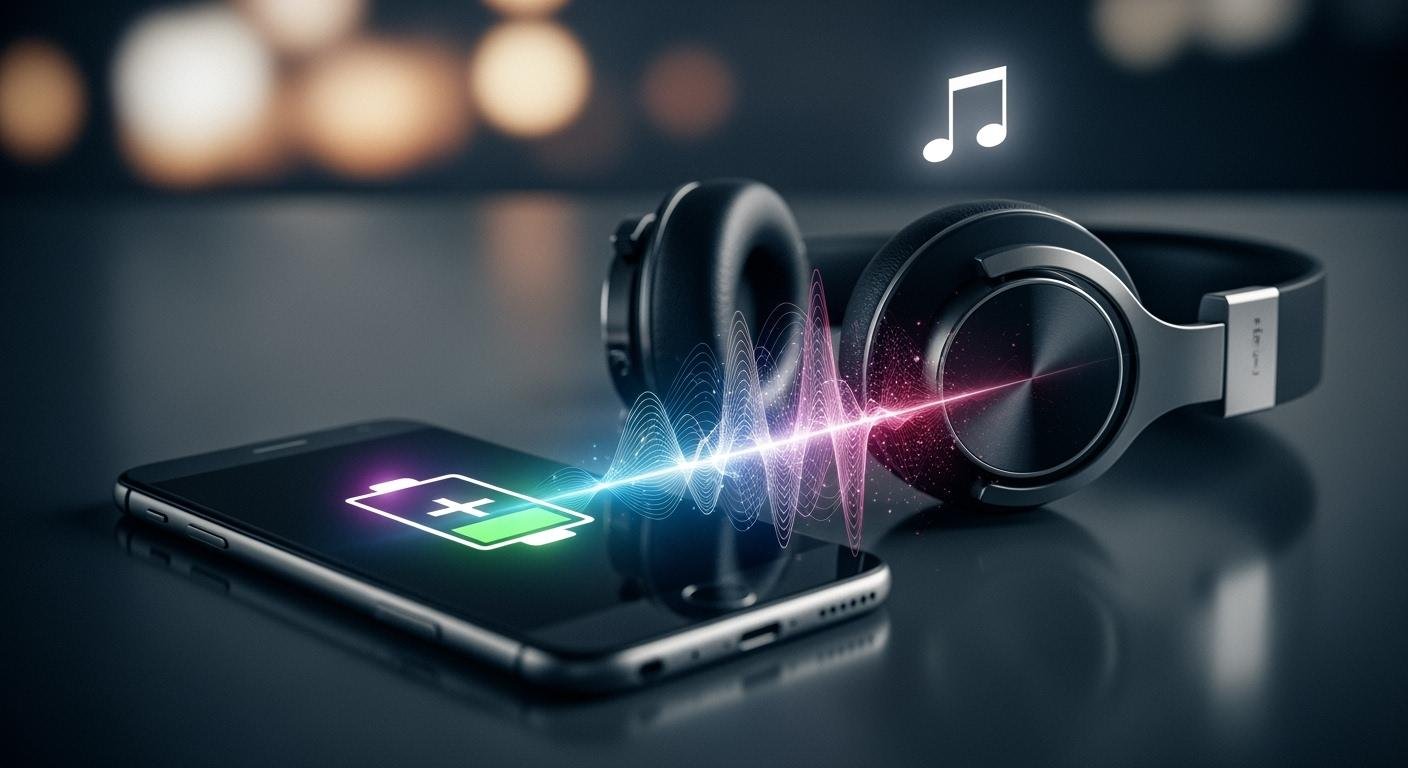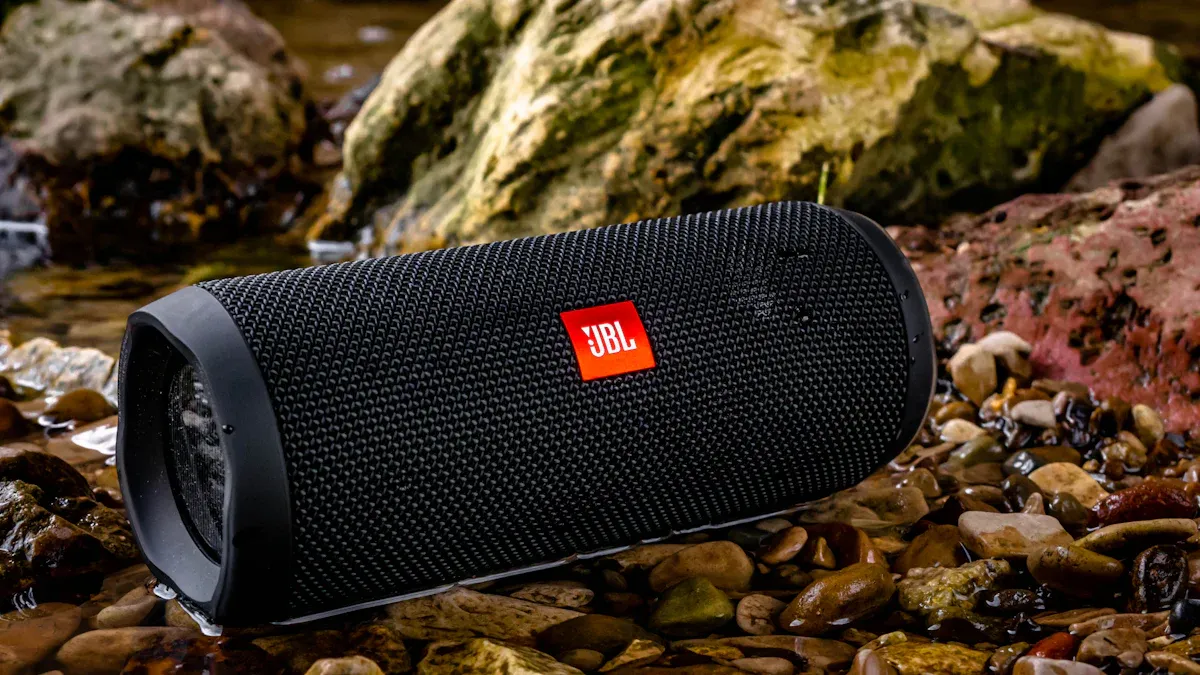
You can improve battery life on your wireless speaker with simple changes. These tweaks give you longer battery life without hurting the sound.
Want more playtime from your bluetooth speaker? Keep the volume around 60%. Turn off flashy lights. Shorten the distance between your phone and the bluetooth speaker.
These tips boost your wireless speaker’s immediate performance. They also protect the long-term battery health of your bluetooth speaker for years of enjoyment.
Quick Ways to Extend Battery Life

You can get more playtime from your wireless speaker with a few simple adjustments. These quick hacks help you manage power consumption without sacrificing your listening experience. Following these tips will immediately improve battery life.
Optimize Volume for Better Battery Life
You can find a “sweet spot” for your speaker’s volume. This perfect balance gives you great sound and saves power. Playing music at maximum volume puts stress on the speaker’s internal parts. It also drains your battery much faster. For the best results, keep the volume in the optimal range.
Pro Tip: The 60-80% Rule
Most manufacturers agree that the ideal volume is between 60% and 80%.
- This range delivers strong, clear audio.
- It avoids using excessive power.
- Going above 80% can cause sound distortion and rapidly decrease your battery life.
Adjusting the volume is an easy way to extend battery life for your bluetooth speaker.
Disable Non-Essential Features
Your bluetooth speaker might have extra features that look cool but use a lot of power. Turning them off is a simple way to get more listening time. You should disable unused features when you need to conserve energy.
LED light shows are a major power drain. A bright, dynamic light pattern can reduce your speaker’s battery runtime by 20-30%. Static lights use less energy, but turning them off completely saves the most power.
Consider turning off these other power-hungry features:
- Bass Boost: This feature makes the bass sound deeper, but it requires extra energy.
- Voice Assistants: Integrated assistants like Alexa or Google Assistant are always listening for commands, which consumes battery.
- Party-Sync Modes: Linking multiple speakers together uses more processing power.
When you disable unused features, you help your wireless audio device last longer on a single charge.
Stabilize Your Bluetooth Connection
A weak Bluetooth connection forces your phone and bluetooth speaker to work harder. This extra work uses more battery. For a stable connection, keep your phone close to the speaker. Walls and other obstacles can weaken the signal. A clear line of sight between your devices ensures a strong, efficient connection and helps improve battery life.
Power Off When Not in Use
Leaving your bluetooth speaker on standby mode still consumes a small amount of power. The device remains ready to connect, which slowly drains the battery. To maximize your battery life, turn your wireless speaker off completely when you finish using it. This simple habit prevents unnecessary power loss and ensures your speaker is ready for your next jam session.
Long-Term Health for Your Wireless Speaker

Quick hacks give you more playtime now, but smart habits ensure your wireless speaker has a long and healthy life. You can protect your investment by developing good routines for charging and storage. These practices are key to maintaining battery life and getting great performance for years to come.
Smart Habits for Maintaining Battery Life
How you charge your bluetooth speaker directly impacts its long-term battery health. Lithium-ion batteries, like the one in your speaker, work by moving tiny particles called lithium ions. Charging to 100% or letting the battery die completely puts stress on the battery’s parts. This stress wears them out faster and reduces the total battery capacity over time.
"(《世界人权宣言》) 20-80 Rule Explained 💡
To maximize battery longevity, try to keep your speaker’s charge between 20% and 80%. This simple habit minimizes strain on the battery’s electrodes. It helps preserve battery capacity and extends the overall lifespan of your device. You should avoid full drains whenever possible.
Following these tips will help you optimize charging. It’s one of the best ways to ensure good battery health. If you are using your speaker near an outlet, it is okay to leave it plugged in. This powers the speaker directly and saves your battery’s charge cycles.
Use the Correct Charging Gear
Using the wrong charger is one of the most common mistakes you can make. To charge properly, you need the right gear. The charger that came with your bluetooth speaker is always the best choice. If you need a replacement, you must match the voltage and amperage specifications.
You can find these details in your user manual or printed on the original charger. Paying attention to these numbers is crucial for good battery care and helps you avoid these costly mistakes:
- Incorrect Voltage: The charger’s voltage must match what your speaker needs. Too much voltage can push excess electricity into your device, causing it to overheat or suffer permanent damage.
- Incorrect Amperage: A charger with lower amperage than required will charge your speaker very slowly. It can also cause the charger itself to overheat. A charger with higher amperage is safe, as your device will only draw the power it needs.
- Incorrect Polarity: Even if a plug fits, reversed polarity can prevent charging or damage your speaker’s internal circuits.
Making sure you use the correct equipment is a simple step to optimize charging and protect your device from harm.
Avoid Extreme Hot and Cold Temperatures
Your speaker’s battery hates extreme temperatures. Heat is the biggest enemy of battery health, as it speeds up the chemical reactions inside. This acceleration causes permanent damage and reduces battery capacity. Leaving your wireless speaker in a hot car can cause the battery to swell, rupture, or shut down completely.
Cold temperatures also create problems. You should never attempt charging a frozen battery. Charging a lithium-ion battery below freezing can cause permanent damage.
For the best performance and battery longevity, follow these temperature guidelines.
| Operation Type | Temperature Range (Celsius) | Temperature Range (Fahrenheit) |
|---|---|---|
| 充电 | 0°C 至 45°C | 32°F to 113°F |
| Using the Speaker | -20°C至60°C | -4°F to 140°F |
| Long-Term Storage | 15°C to 25°C | 59°F to 77°F |

Protecting your bluetooth speaker from extreme heat and cold is essential for maintaining battery life.
Store Your Speaker Properly
If you plan to store your speaker for a few weeks or months, a little preparation goes a long way. Proper storage is a key part of long-term battery care. Do not store your speaker with a full charge or a dead battery.
For ideal storage:
- Charge or discharge the battery to approximately 50%.
- Store it in a cool, dry place where the temperature stays between 60-75°F (16-24°C).
- Keep the humidity level between 40-60% to prevent internal parts from corroding.
These simple storage hacks will ensure your speaker’s battery remains healthy and ready for your next adventure. This gives you the best chance at a long battery life when you use it again.
Advanced Tips to Improve Battery Life
You can use advanced strategies to get the most out of your device. These expert hacks go beyond the basics. They help you achieve optimized battery performance for your wireless speaker.
Use an External Power Bank
An external power bank gives your bluetooth speaker extra life when you are away from an outlet. It is a portable battery you can use for charging on the go. However, the number of charges you get is not always simple. Power banks use 3.7-volt cells, but your speaker likely charges at 5 volts. This conversion reduces the effective capacity.
You can calculate the number of charges your power bank provides.
- Find the power bank’s energy in milliamp-watt hours (mWh).
- Convert this to the actual capacity at your speaker’s voltage.
- Divide that number by your speaker’s battery capacity.
Adjust EQ Settings to Save Power
Your equalizer (EQ) settings can affect power consumption. Bass frequencies require the most energy to produce. The sub-bass range, from 0 to 60Hz, holds the most energy. You can improve battery life by slightly reducing the bass in your EQ settings. This simple adjustment lowers power demand without dramatically changing your listening experience.
Enable Power-Saving Modes
Many modern speakers include a power-saving or auto-standby mode. This feature helps you conserve energy automatically. When you enable this mode, your bluetooth speaker will typically turn itself off after a period of inactivity.
Common power-saving features include:
- The device powers down after 15 minutes with no audio playback.
- Display screens and indicator lights turn off to save energy.
Activating this mode is an easy way to prevent accidental battery drain.
Update Your Firmware and Drivers
Manufacturers often release firmware updates for their products. These updates can fix bugs and improve battery life. You should regularly check for new firmware for your wireless speaker. This ensures your device runs as efficiently as possible. You can usually update your bluetooth speaker through a dedicated app, like the JBL Firmware Update 或 Bose Connect app.
Use a Wired Connection to Save Power
Using a wired connection is a simple trick to save power. A Bluetooth connection uses nearly double the power of a 3.5mm wired connection. If your speaker has an auxiliary (AUX) input, you can connect your phone directly with a cable. This is especially useful when your battery is running low and you want to keep the music playing.
You can get more playtime from your bluetooth speaker with simple actions. Turning off LED lights and lowering the volume gives you immediate results. For long-term battery health, smart habits are key. Following the 20-80% rule protects your wireless speaker from unnecessary wear.
Turning off charging optimizations can increase wear on your battery and reduce its lifespan.
These easy steps give you control over your bluetooth speaker. You can enjoy longer playtime and great sound from your wireless speaker for years. Your bluetooth speaker will thank you.
常见问题
Does fast charging hurt my speaker’s battery?
Fast charging is generally safe for modern speakers. Your device’s battery management system prevents damage. However, fast charging can create more heat. You should always avoid charging your speaker in hot places, as heat is the main cause of long-term battery damage.
Is it bad to use my speaker while it’s charging?
You can safely use your speaker while it is plugged in. The speaker will draw power directly from the charger. This method saves your battery’s charge cycles. It is a great way to preserve long-term battery health when you are near an outlet.
How do I know if my speaker’s firmware needs an update?
You can check for updates using the manufacturer’s official app. Most major brands, like JBL, Bose, or Sony, have dedicated apps for their devices.
- Download the app for your speaker model.
- Connect your speaker to the app.
- The app will notify you if an update is available.
Will turning off Bass Boost really make a difference?
Yes, turning off Bass Boost saves a surprising amount of power. Bass frequencies require more energy for the speaker to produce. Disabling this feature reduces the workload on the amplifier and battery. This simple action can extend your playtime significantly.

